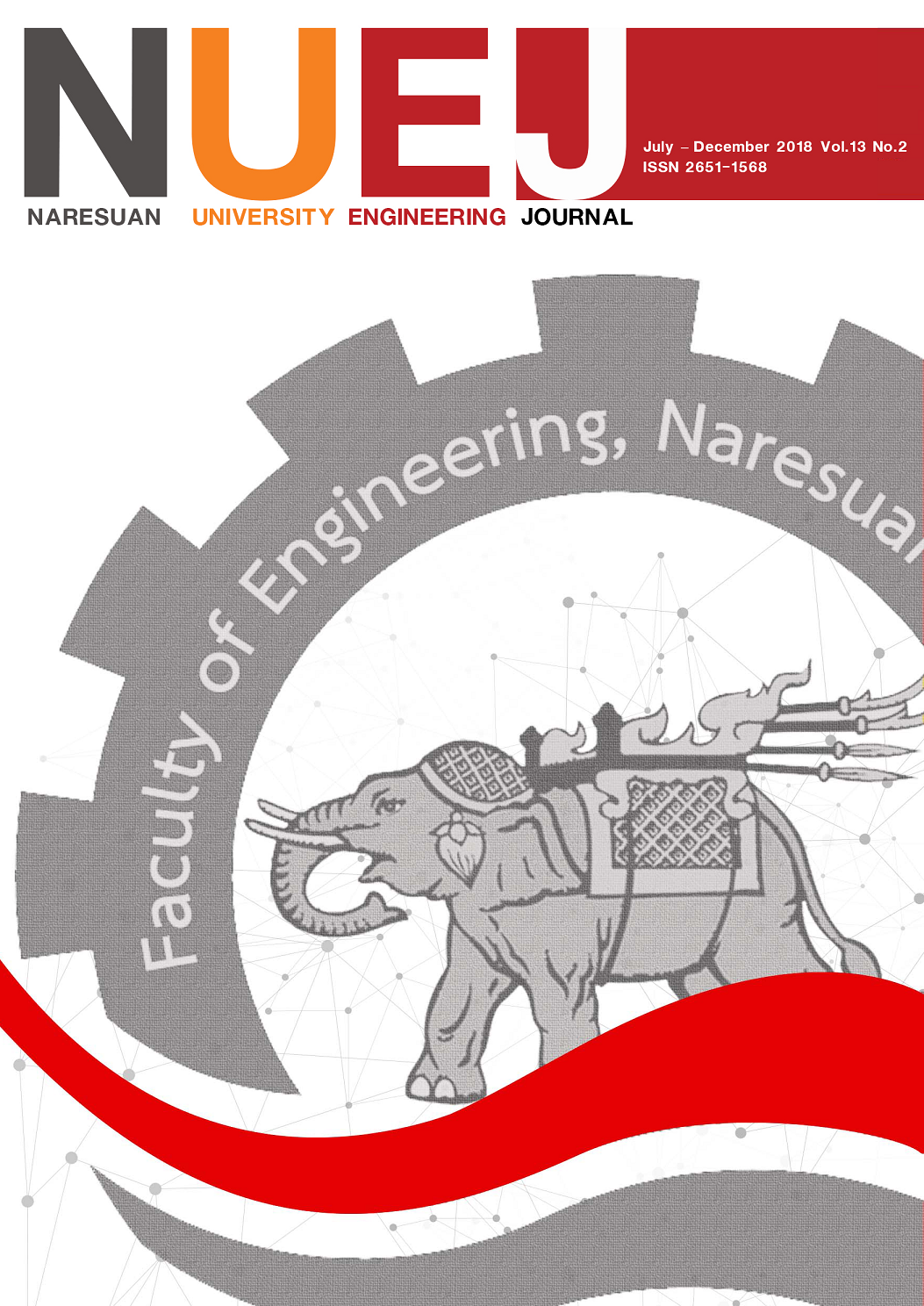Detection and Classification of Rotor broken bar Faults in Induction Motor Using Fuzzy Logic and Artificial Neural Networks
Main Article Content
Abstract
In this paper, the detection and classification of broken rotor bar fault of induction motor using fuzzy logic and artificial neural networks is presented. Input data has been utilized to obtained data collection of the one phase stator current. Furthermore, fast fourier transform (FFT) is employed for converting original stator current waveform, which is time domain, to stator current signal, which is frequency domain, that is labeled as motor current signature analysis for collecting essential data in order for sending into artificial neural networks and fuzzy logic later. Consequently, the fuzzy logic can perform very well for the detection and classification of broken rotor bar fault in term of lowest MSE and best accuracy that comparing with other data test (FLS: 99.84 %) (ANN: 93.54 %).
Article Details
References
[2] P.F. Allbrecht, J.C.Appiarius and R.M.McCoy. (1986). Assessment of the Reliability of Motors in Utility Applications-Updated. IEEE transactions On Energy Conversion, Vol. 1, No. 1, pp. 39-46,1986.
[3] W. T. Thosmson and Mark Fenger, (2001). Current signature analysis to detect induction motor faults. IEEE Industry Application Magazine, Volume 7, Issue 4, July - August, 26-34.
[4] N. Sittisrijan and S. Ruangsinchaiwanich. (2013). Synthesis of stator current waveform of induction motor with broken bar conditions. International Conference on Electrical Machines and Systems (ICEMS), Busan, Korea, 26 – 29 October.
[5] N. Sittisrijan; B. Wangngon; S. Ruangsinchaiwanich. (2014). Synthesis of stator current waveform of inverter-fed induction motor with broken bar conditions. International Conference on Electrical Machines and Systems (ICEMS), 22-25 Oct, Incheon, South Korea. pp. 3441 - 3445.
[6] M. Moradian, M. Ebrahimi, M. Danesh and M. Bayat. (2006). Detection of broken bars in induction motors using a neural network. IEEE Journal of Power Electronics (JPE), Volume 6, No.3, pp. 245 – 252.
[7] Sri R Kolla and Shawn D Altman. (2006). Artificial neural network based fault identification scheme implementation for a three-phase induction motor. ISA Transactions, Vol. 46, Issue 2, pp. 1 - 6.
[8] Dragan Mati and Filip Kuli. (2010). Artificial neural networks broken rotor bars induction motor fault detection. IEEE, Symposium on Neural Network Applications in Electrical Engineering, 23 – 25 September, pp. 49-53.
[9] A. Drira and N. Derbel. (2011). Classification of rotor fault in induction machine using Artificial Neural Networks. in Systems, Signals and Devices (SSD), International Multi-Conference on, pp. 1-6.
[10] B. Wangngon, N. Sittisrijan, S. Ruangsinchaiwanich. (2014). Fault detection technique for identifying broken rotor bars by artificial neural network method. Electrical Machines and Systems (ICEMS), 17th International Conference on, pp. 3436 – 3440
[11] k. kraikitrat, S. Pengpraderm and S. Ruangsinchaiwanich. (2016). Detection and Classification of Induction Motor Faults Using Feed-Forward Backpropagation Network. International Conference of Multidisciplinary Approaches on UN Sustainable Development Goals, 28th - 29th December.
[12] k. kraikitrat, B. Wangngon and S. Ruangsinchaiwanich. (2018). Classification of Broken Rotor Bars in Induction Motor Faults Using Cascade-forward Artificial Neural Network. EENET Journal, v. 1, n. 2, p. 26, feb. ISSN 2586-8780. (In Thai)
[13] L. A. Pereira and D. da Silva Gazzana. (2004). Rotor broken bar detection and diagnosis in induction motors using stator current signature analysis and fuzzy logic. IEEE Industrial Electronics Society, Vol. 3, 3019 – 3024.
[14] C. G. Dias and L. E. Chabu. (2008). A fuzzy logic approach for the detection of broken rotor bars in squirrel cage induction motors. IEEE World Congress on Computational Intelligence, 1987 - 1991.
[15] S. E. Zouzou, W. Laala, S. Guedidi and M. Sahraoui. (2009). A Fuzzy Logic Approach for the Diagnosis of Rotor Faults in Squirrel Cage Induction Motors. International Conference on Computer and Electrical Engineering, Vol. 2, 173 - 177.
[16] W. Laala, S. Guedini and S. Zouzou. (2011). Novel approach for diagnosis and detection of broken bar in induction motor at low slip using fuzzy logic. EEE Symposium on Diagnostics for Electrical Machines, Power Electronics & Drives, pp. 511 - 516.
[17] Fatih Özcan a. Cengiz D. Atisb. Okan Karahan b. Erdal Uncuoglu c. Harun Tanyildizi d. (2009). Comparison of artificial neural network and fuzzy logic models for prediction of long-term compressive strength of silica fume concrete. Advances in Engineering Software, Volume 40, Issue 9, pp. 856-863.
[18] A.Badri Z.Ameli A.MotieBirjandi. (2012). Application of Artificial Neural Networks and Fuzzy logic Methods for Short Term Load Forecasting. Energy Procedia, Volume 14, pp. 1883-1888.


